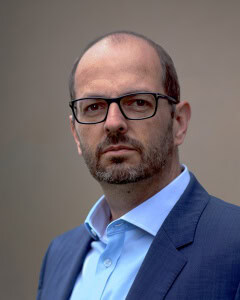
FDA approvals: 1996 versus 2014
pharmafile | January 12, 2015 | Feature | Manufacturing and Production, Medical Communications, Research and Development, Sales and Marketing | FDA, John LaMattina, LaMattina, NDA, US, appovals, drugs
As highlighted in a number of recent stories, 2014 was a banner year for the biopharmaceutical industry with 41 new drugs approved by the FDA.
These same stories point out that this is the largest total of New Medical Entities (NMEs) approved by the FDA since 1996, when 53 drugs were approved.
Actually, looking at the FDA’s own account, 2014 represents the second highest number of approvals since president Roosevelt signed the Food, Drug and Cosmetic Act which completely revamped the food and drug approval process in 1938.
One might even argue that 2014 represents the most prolific year ever for NDA approvals since 1996 can be considered an aberration. In the early 1990s, the US was undergoing a ‘drug lag’, that is, drugs were being approved more rapidly abroad than here.
As a result, a number of New Drug Applications (NDAs) were languishing at the FDA for years before approval. This outraged a lot of Americans who might have benefited from these not yet approved drugs.
Not surprisingly, Congress got involved and realised that the FDA was under-resourced to rule on NDAs in a timely fashion. To solve this problem, Congress enacted the Prescription Drug User Fee Act (PDUFA), a mechanism whereby charges were levied on pharmaceutical companies for each NDA filed.
The revenues from these ‘user fees’ were used to hire 600 new drug reviewers and support staff. This personnel increase enabled the FDA to work through the backlog of NDAs, resulting in the bolus of approvals in 1996.
However, more fascinating is the comparison of the drugs that were approved in each respective year. Not only was 1996 a big year in terms of number of approvals, there was an incredibly high number of important drugs approved as well.
The biggest selling drug of all time, Lipitor, is part of the Class of ’96, as are other cardiovascular drugs including Diovan. Early mainstays of cancer treatments were approved in 1996 such as Gemzar, Camptosar, Taxotere and Hycamtin.
Not surprising, given this time period, drugs to treat HIV-AIDS such as Crixivan, Norvir and Nevirapine are prominent. The neurosciences arena saw approval of a number of compounds including Aricept and Zyprexa. A number of drugs to treat respiratory diseases is also on this list such as Accolate , Zyflo and Allegra.
The Class of ’96 is dominated by small molecules. The only biologicals that appear are the insulin analog, Humalog, and Avonex (interferon beta-1a). Rare disease drugs are virtually non-existent. But most striking is the landscape shift that has occurred in the biopharmaceutical industry when looking at the parent companies that sponsored the NDAs of 1996.
The following names are gone, swallowed up by mergers and acquisitions: Warner-Lambert, Rhone-Poulenc Rorer, Pharmacia & Upjohn, Carter-Wallace, Allergan, Organon, Forest, Hoechst Marion Roussel, Alcon, Athena, Roberts, Dupont, Ivax and Knoll.
These individual companies were responsible for 21 of the 53 approvals. Furthermore, Glaxo Wellcome and SmithKline Beecham were separate entities back then – as were Astra and Zeneca. Even Biogen was years away from its merger with Idec.
Back in 1996, I don’t think many would have dreamed of the bounty of drugs that would be approved in 2014. But it’s more than just quantity. The drugs in the Class of ’14 would have seemed like science fiction in 1996.
Let’s start with the cancer drugs approved last year. Immuno-oncology, activating one’s immune system to fight cancer, has clearly arrived with the PD-1 blockers Keytruda from Merck and BMS’ Opdivo for melanoma, as well as Amgen’s Blincyto for acute lymphoblastic leukaemia.
The age of targeted cancer drugs has continued with Zykadia from Novartis for non-small cell lung cancer and Lilly’s Cyramza for stomach cancer. Add in Spectrum’s Beleodaq for a rare form of non-Hodgkin lymphoma, and Zydelig from Gilead for B-cell blood cancers and it becomes clear that the decades long investments in oncology R&D is really bearing fruit.
The breakthroughs go well beyond new cancer treatments. Millions with hepatitis C now have two new curative drugs, Viekira Pak and Harvoni from Gilead, spawning not just options for patients seeking to avoid the downstream impact of hepatitis C such as liver failures and the need for transplantations, but also inspiring price competition.
There are four new drugs to help battle the growing diabetes problem: Farxiga from BMS and AstraZeneca, Tanzeum by GSK, Lilly’s Jardiance and Trulicity. While concerns grow over the need for new antibiotics as the number of drug resistant infections proliferate, the industry has responded with four new medicines: Dalvance from Actavis, Orbactiv (The Medicines Company), Zerbaxa and Sivextro from Cubist.
But perhaps the biggest shift has occurred in drugs for rare diseases. Only 3,000 people in the world have Morquio A Syndrome, a rare enzyme deficiency which leads to joint and bone abnormalities and early death, but they now have Vimizim from BioMarin to treat this condition.
AstraZeneca’s Myalept is now available to treat those with lipodystrophy, a potentially fatal condition that affects a few thousand people worldwide. The 1,200 patients with multicentric Castleman’s disease, a debilitating disease of the lymph nodes, have Sylvant by J&J to treat their condition.
Gaucher’s disease patients have an oral pill, Cerdelga from Sanofi, to replace the injections needed to prevent build-up of fat in their organs and bones. There are other members of the Class of ’14 that address small patient populations – a clear shift from the large patient population mentality that dominated biopharma company thinking in 1996.
Clearly, the favourable return-on-investments realised from these drugs is driving the R&D investments being made in these diseases. But to those patients and their families impacted by these diseases, the R&D devoted to rare diseases is a God-send.
It’s not just the number of approvals that have made 2014 a special year for the industry, perhaps the best in its history. The Class of 2014 contains important new drugs across a wide spectrum of diseases.
Many of these are life-saving medicines. Others are impacting the quality of life for millions around the world. There are those who attack the biopharma industry claiming the industry is not focussed on important medicines, that it is interested only in ‘me-too’ drugs or making marginal improvements on older, generic drugs.
Scrutiny of the Class of 2014 shows that is not the case. The industry is delivering important new drugs and, if this continues, that bodes well for the health of us all.
John LaMattina is a former Pfizer head of R&D and maintains a Forbes.com blog.
Related Content

Johnson & Johnson submits robotic surgical system for De Novo classification
Johnson & Johnson has announced the submission of its Ottava Robotic Surgical System for De …

MedPharm announces US FDA inspection of North Carolina manufacturing facility
MedPharm has announced that the US Food and Drug Administration (FDA) has completed a successful …

Rethinking oncology trial endpoints with generalised pairwise comparisons
For decades, oncology trials have been anchored to a familiar set of endpoints. Overall survival …




